Clean chapter for Woking firm starts with hybrid supercar
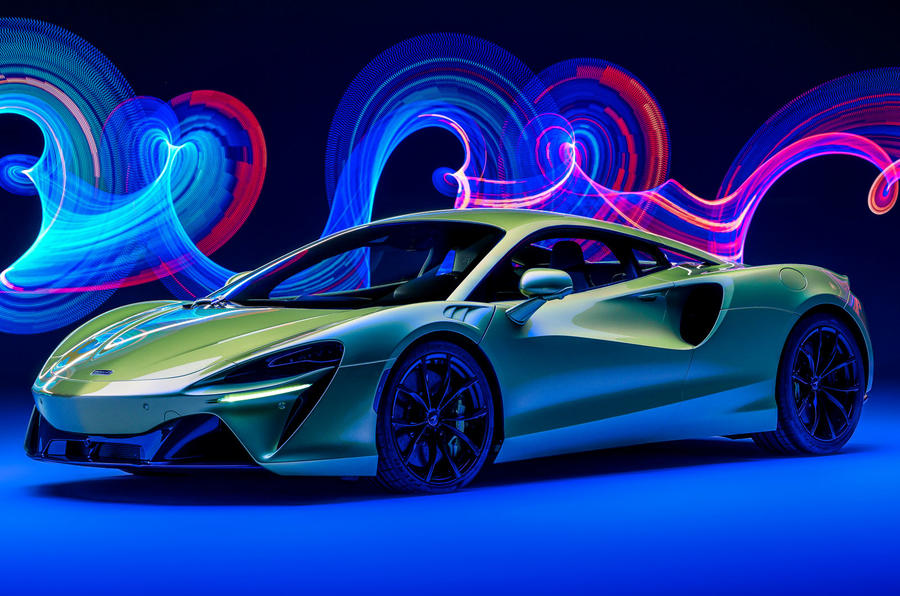
McLaren has unveiled its game changing supercar since its launch of the 12C, the Artura, A ‘clean-sheet’ for the Woking firm, changing almost every aspect of its V8-engined Sports and Super Series models with an all-new design that hints at future electrified McLaren models.
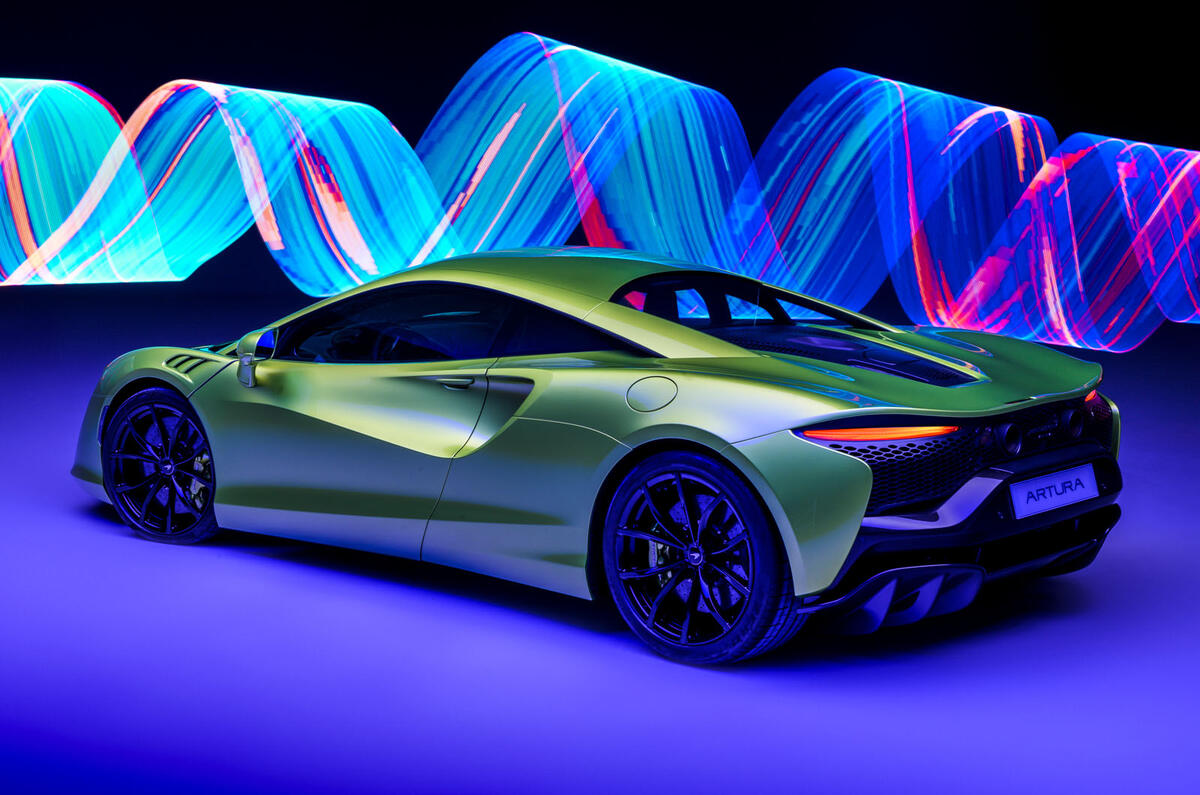
The Artura which is available to order now from £185k, is a plugin hybrid with a 205mph top speed and a quoted 0-60 time of 3.0 seconds, with a combined power output of 671bhp thanks to an electric motor, a 7.4kWh battery and an all-new 2993cc petrol V6, developing 577bhp at 7500rpm, redlines at 8500rpm and is 50kg lighter than the previous cars’ V8, all mated to a new eight-speed gearbox, the new powertrain is to be made at its works in Shoreham, West Sussex, and was created entirely for this application, said powertrain boss Richard Jackson, In addition to the explosive performance, it can cruise for up to 19 miles on battery power alone reaching speeds of up to 81mph. and its combined fuel economy exceeds 50mpg.
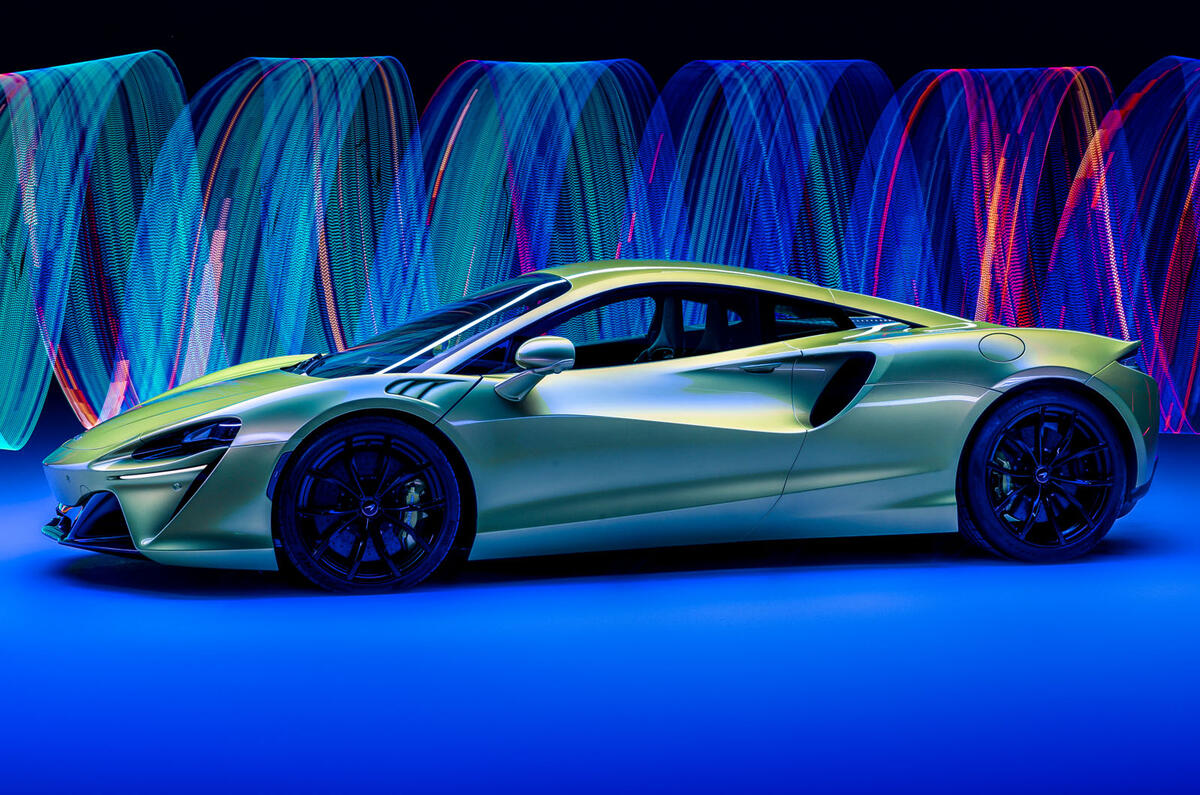
It’s a 120deg direct-injection ‘hot vee’ design with the turbos mounted in the centre of the engine for compactness and efficient gas flow. The all-aluminium design uses continuously variable valve timing. A dry sump lets it sit very low in the car and its exhausts exit through rear bodywork, between the two blade-like LED tail-lights.
The V6 looks hardly any bigger than the transmission bell housing with its all-new eight-speed gearbox behind it. Inside the bell housing is an ultra-compact 92bhp axial flux electric motor that assists the V6 when required, notably by providing ‘torque infill’ at lower speeds and during gearchanges.
Deep within the Artura’s transmission is McLaren’s first e-diff, essentially an electronically controlled clutch pack that variably deploys torque between the rear wheels and allows quicker and more subtle torque shifts than a conventional limited-slip differential would do.
It controls the amount of slip angle in a drift, too. The driver can adjust that via the Variable Drift Control settings on the cockpit’s central screen.
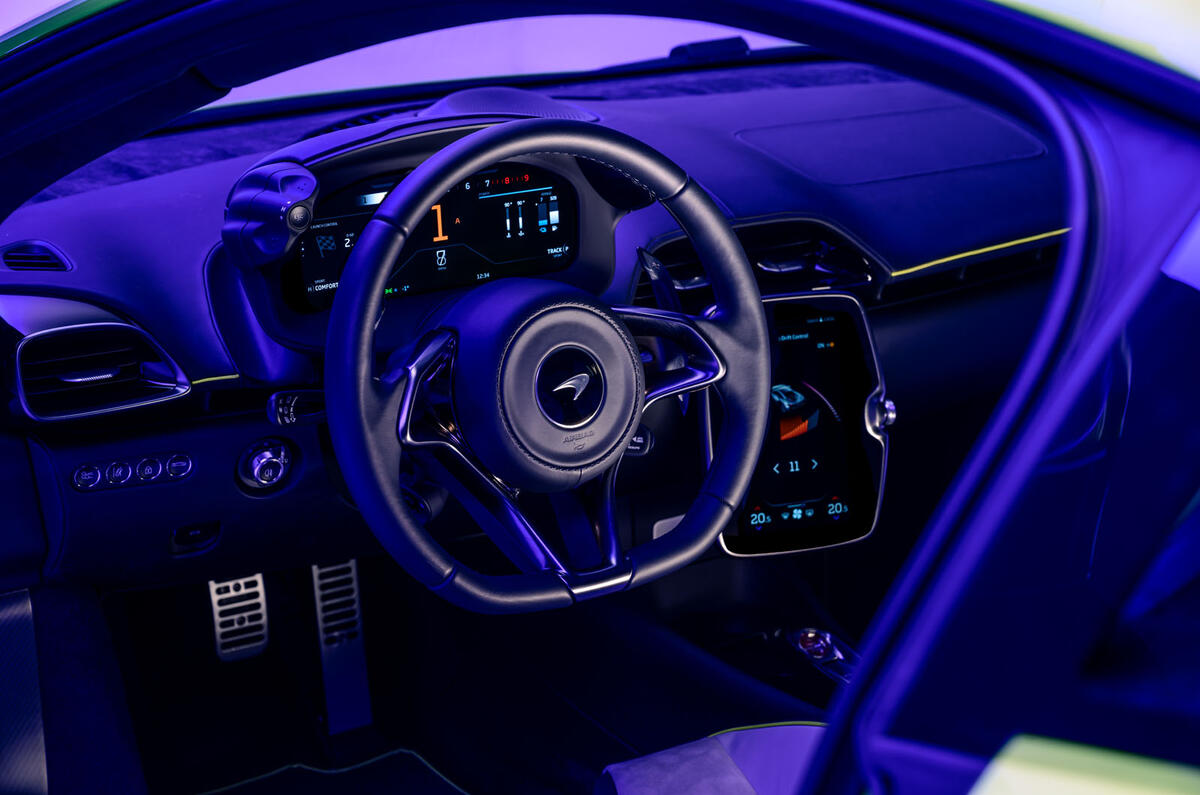
The Artura weighs just 27kg more than a 720S at 1495kg even with its 671bhp powertrain, plus electric motor and a 7.4kWh battery, the hybrid components weigh only 130kg, showing the extent of McLaren’s weight-saving measures.
The arrival of the Artura, brings McLaren’s naming technique a different approach by abandoning its usage of using numbers to characterise its cars, in favour of names.
The new model will sit between the recently launched GT and below the 720S
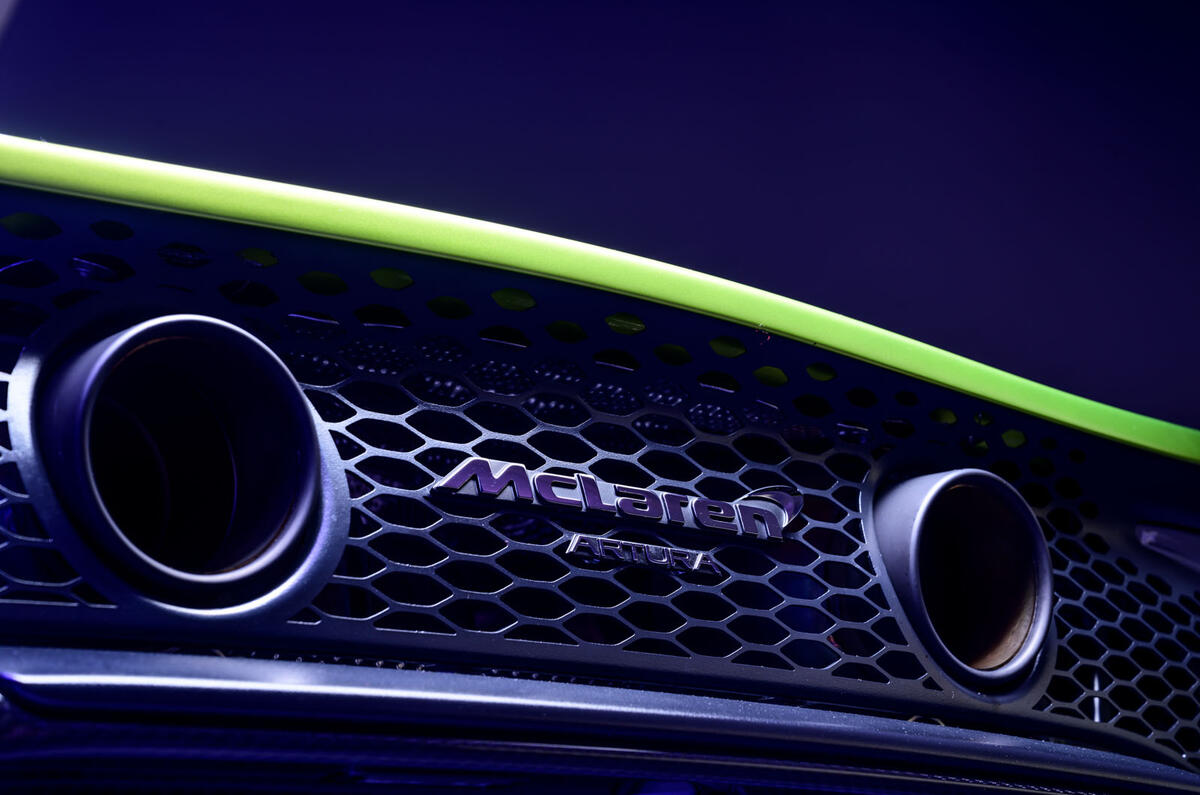
The Artura is defined by ultra-light engineering. Innovative, immensely strong and weighing just 82kg, the monocoque at the heart of our McLaren Carbon Fibre Lightweight Architecture (MCLA) is the car’s pioneering new platform. Built with incredible precision, it uses four new kinds of carbon fibre, a new resin system and new core material to deliver market-leading strength and stiffness.
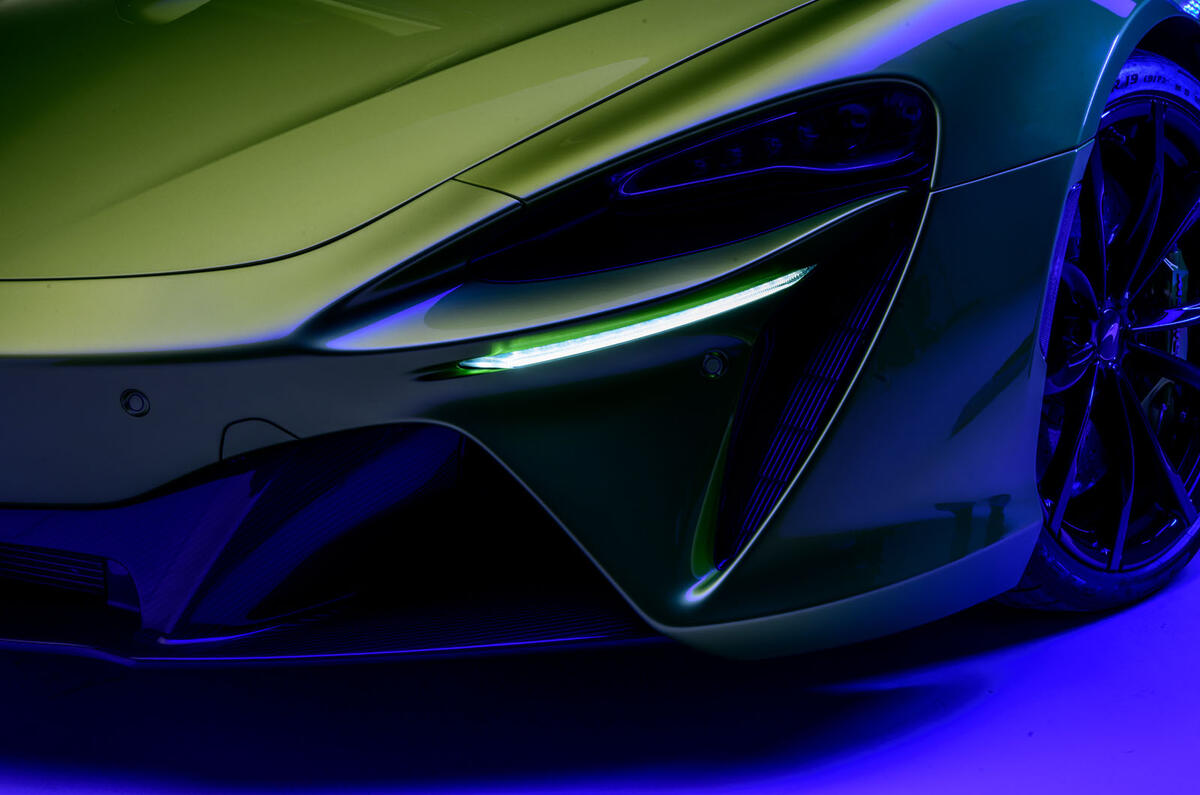
The Artura is sculpted to harness airflow to maximum effect. Features such as new hidden door inlet ducts and rear buttresses channel air over, under and through the body. The rear spoiler and diffuser generate 50kg of downforce for ultimate stability.
The front suspension is closely related to the Senna’s double-wishbone arrangement and McLaren repeats its fondness for electro-hydraulic power steering, which offers benefits in “immediacy, on-centre feel and detailed feedback” over the all-electric systems favoured by most rivals. There is also a new steering column and a bespoke torsion bar in the rack: McLaren engineers say the combination brings further benefits in weight build-up away from centre and gives a more natural, unassisted steering feel.
The rear suspension is new: a five-link system consisting of a top wishbone, two lower links and a toe control arm each side, ahead of the rear wheel. This layout delivers considerably more design freedom and an unsprung weight saving of 2.4kg a side, plus better wheel control under braking and acceleration, improved stability and enhanced grip levels.
The ‘Proactive’ dampers use accelerometers to ‘read’ a road and adjust rates according to conditions, but drivers are still offered three selectable handling modes: Comfort, Sport and Track. Each mode has its own parameters for the dampers and e-diff, and drivers can also separately configure the Artura’s electronic stability control to adjust the degree of intervention.
The tyres are Pirelli’s latest P Zero Corsas, now deemed similar in grip to the Trofeo R tyres on McLaren’s 600LT. Each carries an electronic chip that monitors air pressure, temperature and wear and ‘talks’ to the Artura’s stability control system. A new polyurethane sponge material inside each tyre is designed to limit noise and vibration transmission into the cabin.
The standard seven-spoke wheels are 19in at the front and 20in at the rear, but several optional designs are available that reduce unsprung weight by up to 10kg.
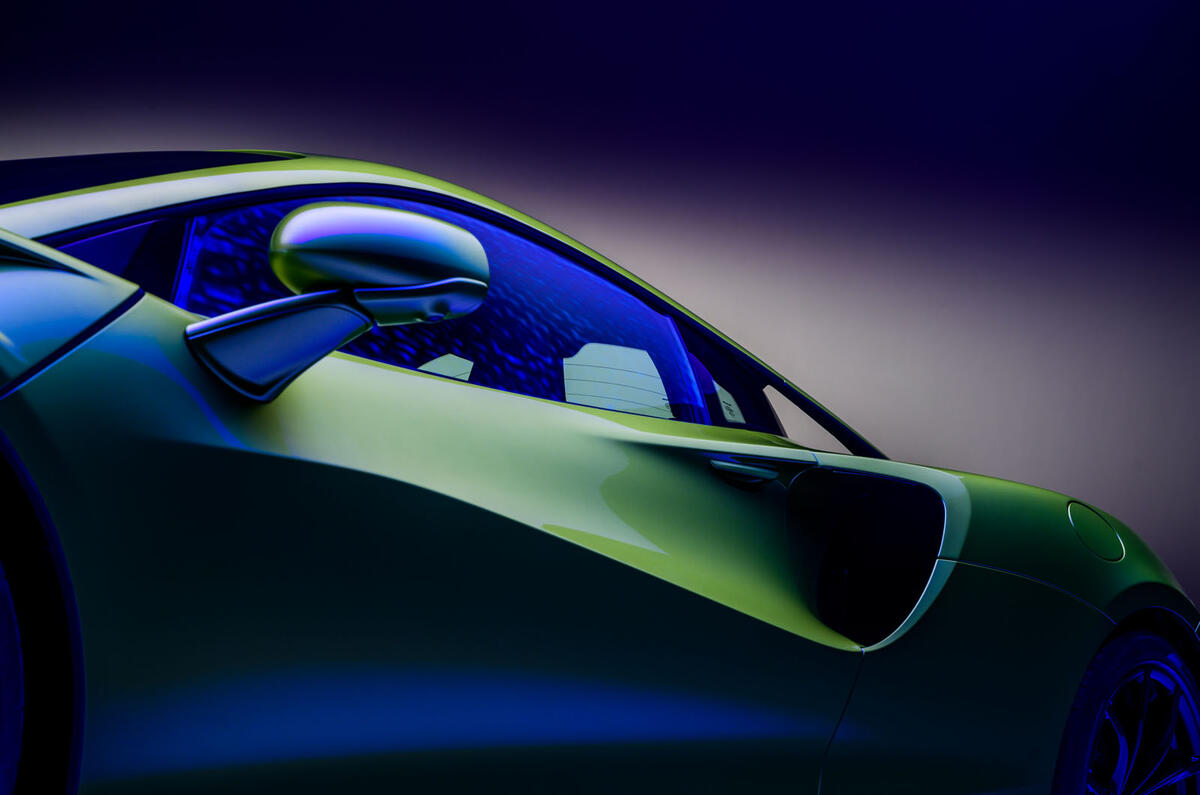
Big efforts have been made to improve the Artura’s feeling of cabin space over its peers, and the dihedral doors have been redesigned to open closer to the car, reducing a previous difficulty of McLaren ownership.
Engineers have worked hard to improve noise, vibration and harshness levels, a new priority now that the car is capable of engine-off running. And although the V6 engine has been tuned to deliver a stirring soundtrack under hard use, McLaren promises it will be quiet when cruising.
The car still features a narrow centre console and a vertically oriented screen but it has all-new infotainment connected to the rest of the car by a new ethernet-based wiring system that speeds up data transfer, reduces cabling by 25% and saves weight. Major controls, including the chassis and powertrain modes, are now fingertip controlled via pods that can be easily operated without a driver’s hands leaving the wheel. Both the instrument binnacle and pods adjust for reach and rake with the wheel.
The other headline interior feature is a new, one-piece Clubsport seat that combines the lightness of a race-style design with a high degree of adjustability by moving fore and aft on rails as usual but for subtler adjustment through an elliptical arc that changes under-thigh support, cushion height and backrest angle in one movement. A heavier Comfort seat is optional.
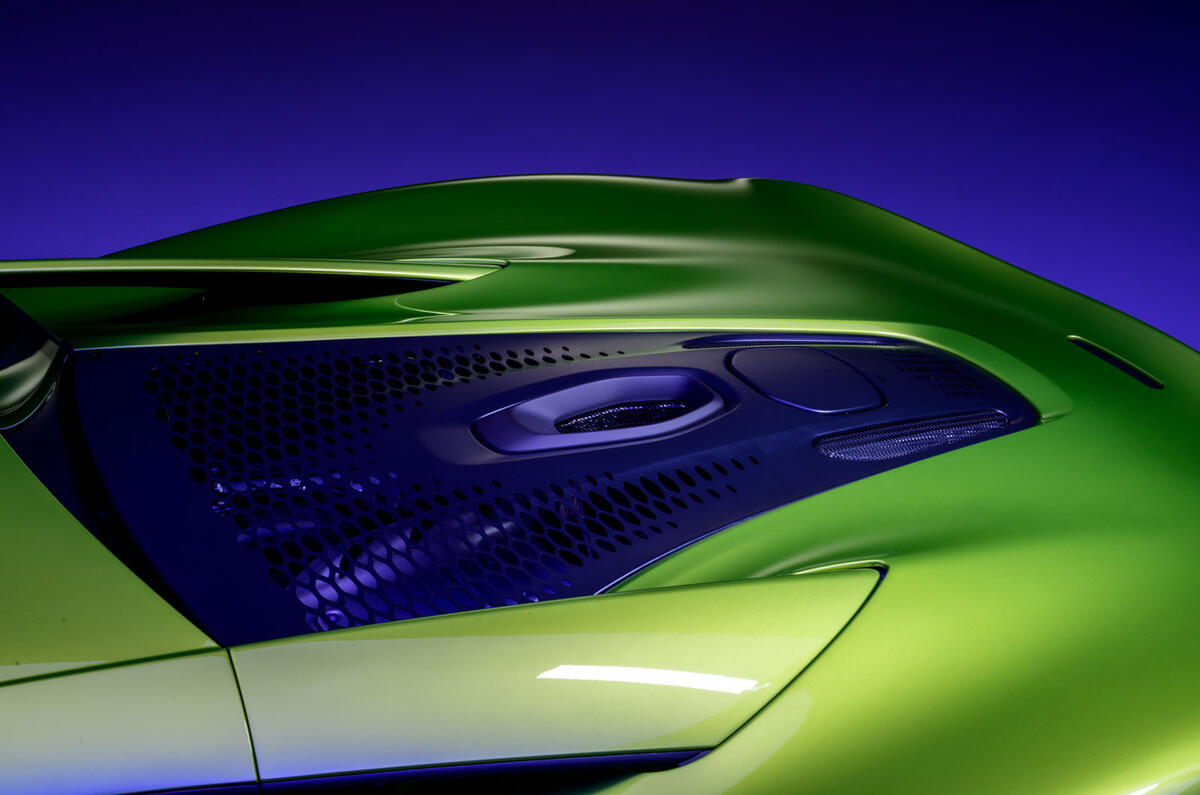
The Artura will be offered in four trims – Standard, Performance, Techlux and Vision – and the usual bespoke services will be available, too. It comes with a five-year warranty plus six years’ cover for the hybrid battery. Deliveries start this summer.
The company is challenging buyers to view the Artura as the beginning of an entirely new model generation, quite different from anything offered before.
“From the beginning, Artura was about challenging ourselves to innovate,” said chief engineer Geoff Grose. “This is a McLaren for the new age and a supercar like no other.”